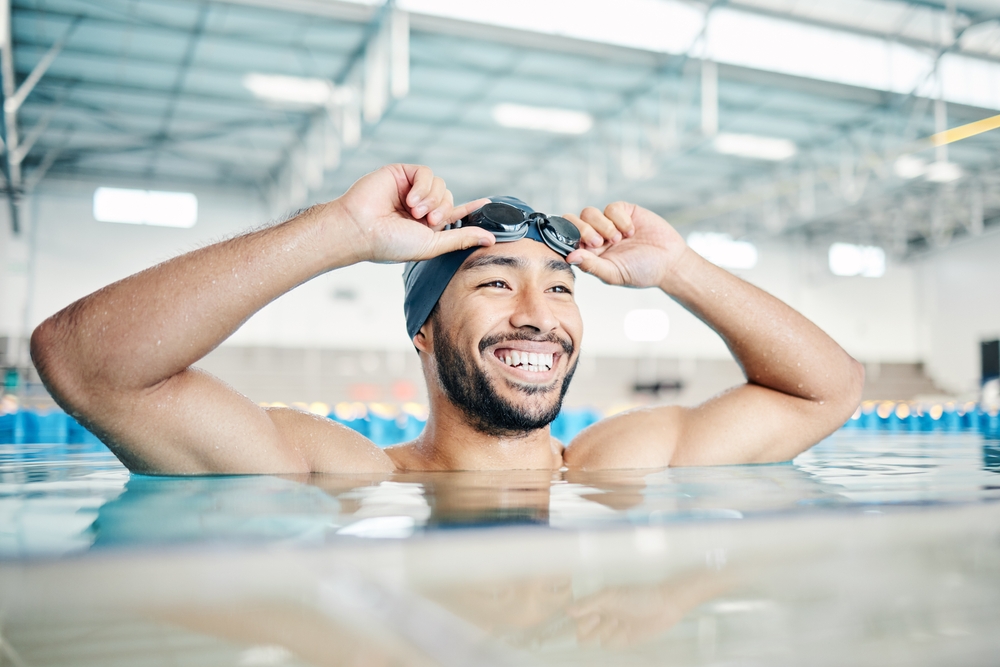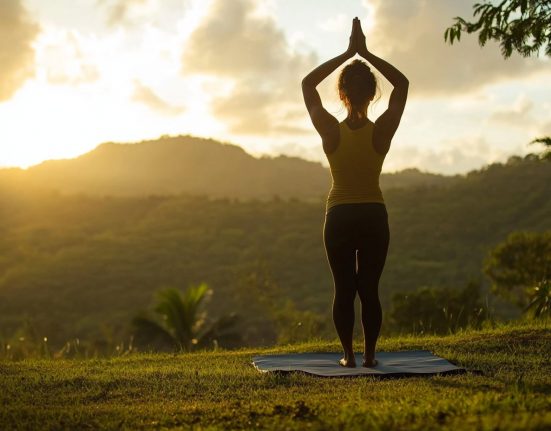Haven’t tried a water-based workout before? Here’s what you need to know to get started
When it comes to building lean muscle, burning fat, and reaching your fitness goals, water may very well be the best exercise tool you’re not already using.
And no, we’re not just talking about swimming: You can check out water-based fitness classes, like aqua cycling and aqua yoga, or build your own water-based resistance workouts. They aren’t just for injury rehabilitation and older adults, says Dan Daly, CSCS, a New York City–based competitive swimmer and performance coach of elite and professional level athletes.
“In my opinion, all athletes and exercise enthusiasts could benefit from cross-training in the water,” Daly says.
Why Exercising in the Water Is Good for You
Pool-based exercises can offer the health-boosting benefits of other workouts: burned calories, strengthened muscles, improved cardiovascular health, and more balanced mental health. But they also carry some unique benefits, most of which are down to two facts:
Water Reduces Body Weight
Movements you do in the water are less taxing on your joints and bones because water reduces the load of your body weight, research shows. This makes pool workouts ideal for strengthening muscles without the stress that running and other weight-bearing exercises can inflict on knees, ankles, and other joints, says New York City–based Todd Sinett, a doctor of chiropractic who is also author of Sit-Ups Are Stupid & Crunches Are Crap.
This reduced stress on joints and bones makes pool exercises a great option for people with aches or pains due to injury or chronic conditions that affect the joints, like osteoarthritis or rheumatoid arthritis, Dr. Sinett says. “Aquatic exercise is also quite beneficial for the elderly because as we age we tend to lose our flexibility and tend to be achier and stiffer,” he notes. “A less taxing exercise environment [such as a pool] is great for everyone, but even better for the elderly, whose body aches and pain may not be so forgiving.”
Water Provides Constant Resistance
“Horizontally, water is 800 times denser than air, providing unique multidirectional resistance,” Daly says. That means when you walk forward through water, your body is fighting the resistance of all of the water around you — vertically, horizontally, and rotationally. (That’s why it takes so much more effort and time to take a few steps in a pool versus on dry land.) This challenges your muscles in unique ways, says Daly: “It requires your muscles to fire and contract harder to overcome the extra resistance of the water.”
That said, no matter how beneficial pool workouts are, Sinett emphasizes that it’s important to perform them in a way that’s appropriate given your swimming abilities. For example, if you aren’t able to swim for extended periods of time, performing your water exercises in a shallow pool or with the assistance of a float is key.
Also, if you have any chronic condition or health issue that could interfere with your ability to safely exercise (or safely exercise in water), it’s a good idea to check with your doctor before trying this type of workout.
7 Fat-Burning Pool Exercises
Daly recommends trying these pool exercises that require zero swimming and can torch major calories to help you meet your fitness goals. These multijoint, multimuscle resistance exercises help you build muscle mass, which in turn helps you burn fat, Daly explains.
These exercises prioritize large, compound movement patterns to get your heart rate up and work a wide range of muscles at the same time. To begin, Daly advises completing all seven exercises in order as a circuit, completing 30 seconds on and 30 seconds off. Give yourself a two-minute rest between rounds. Start with two rounds, and work your way up to eight rounds gradually.
Increase your workout frequency, duration, and intensity as your fitness progresses.
Daly advises performing the workout twice a week as an ideal low-impact conditioning routine for days between other lifting and aerobic workouts (which should be performed two to three times a week, per guidelines from the American College of Sports Medicine). There’s no minimum to how often you need to perform these exercises to benefit from them, and as long as you factor in rest days (which will promote proper recovery by giving your muscles time to heal), you won’t overdo it.
While you can wear water shoes if you prefer to, Daly says if you’re doing the exercises in a pool, you likely won’t need footwear. And for the exercises that require you to move your feet (the running and the side shuffling, for example), water shoes will add drag and make the moves more challenging.
1. Running
Staying in the shallow end of the pool, run from one edge to the other (the shallower the water, the heavier your bodyweight will feel; but the deeper the water, the more drag or resistance you’ll feel working against your movement). You’ll need to lean forward from the ankles, pump your arms, and bring your legs into a high-knee position before extending them back down to move forward.
You can increase downward resistance by holding a weighted object at chest level, or you can make moving forward harder by holding a kickboard in front of you with your arms fully extended. Pool-specific ankle weights and swim parachutes (a piece of fabric you attach to your waist that creates drag behind you as you move through the water) can also up the ante.
2. Pool-Edge Push-Ups
Place your hands on the edge of the pool, just over shoulder-width apart, brace your core, shift your weight into your upper body so that your toes lift from the floor of the pool, and raise your torso out of the pool until your arms are fully extended. Pause, then slowly lower your body back to start and repeat.
If this feels too difficult on your chest, shoulders, or triceps, or if you aren’t able to perform many reps with proper form, use your lower body for support by using your legs to jump off the bottom. Daly notes this can also help make this a full-body exercise.
3. Squat Jumps
Stand in the shallow end of the pool with your feet shoulder-width apart and toes turned slightly out. Squat down by sitting back into your hips and heels with flat feet, then straighten your hips, knees, and ankles to drive through the balls of your feet and jump up as high as possible into the air. (The water should be shallow enough that squatting does not bring your head underwater). Land on the balls of your feet, then immediately squat back down and repeat. Depending on your comfort level, you can squat low enough to dunk your head under water.
To make the exercise harder, move faster. It will create more resistance, and it’ll require you to complete more reps in the same amount of time.
4. Side Shuffling
Stand in the shallow end of the pool, and side shuffle from one edge of the pool to the other. Focus on keeping your core engaged and toes pointing in from of you.
To increase the burn, hold your hands to the side or wear a pool-approved mini resistance band around your legs.
5. Prone Scissor Kick
Start in deep enough water that your feet are not touching the ground. Holding onto the edge of the pool or a flotation device, lift your legs so your body is in a horizontal position, keeping your spine neutral from the back of your head to your tailbone. Keeping your knee soft, kick from your hip (as if you were kicking a soccer ball), whipping or flicking out through the toes. Repeat using the other leg. Move your legs faster and kick harder to up the resistance (and the workout!) — you should be creating white splashes at the surface of the water.
Focus on keeping your body in one straight line from the back of the head to the tailbone as you kick. This will increase how hard your glutes (your body’s biggest muscles) have to work.
You can also loop a resistance band around your legs to add a greater challenge.
6. Press to Row
Start standing holding a kickboard against your torso and lower into a squat position so that your chest is submerged in the pool. Brace your core, and extend your arms and the kickboard forward against the water, then immediately pull your arms and the kickboard back toward your chest. You should feel the muscles of the back working.
7. Jumping Jacks
Stand in the pool with your head above water (as deep as you’re comfortable), feet together, and arms down at your sides. Jump your legs out to both sides as you raise your arms straight overhead, then reverse the motion, jumping your feet back in together and bringing arms back down to your sides. If you’re distracted by the splashing, only lift your arms up to the height of the water.
Here, the simplest way to up the intensity of the exercise is to increase your speed.









